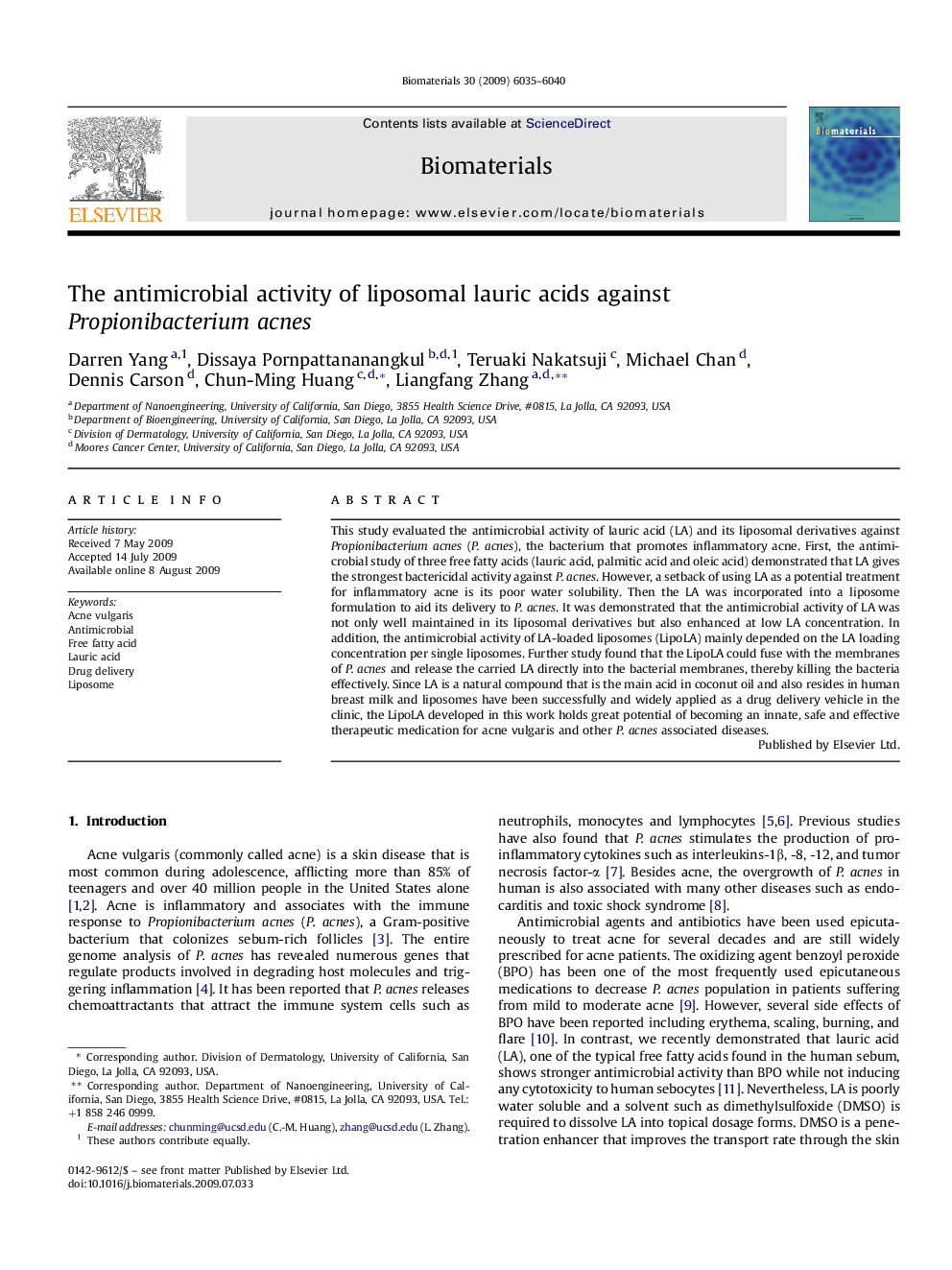| Article ID | Journal | Published Year | Pages | File Type |
|---|---|---|---|---|
| 9745 | Biomaterials | 2009 | 6 Pages |
This study evaluated the antimicrobial activity of lauric acid (LA) and its liposomal derivatives against Propionibacterium acnes (P. acnes), the bacterium that promotes inflammatory acne. First, the antimicrobial study of three free fatty acids (lauric acid, palmitic acid and oleic acid) demonstrated that LA gives the strongest bactericidal activity against P. acnes. However, a setback of using LA as a potential treatment for inflammatory acne is its poor water solubility. Then the LA was incorporated into a liposome formulation to aid its delivery to P. acnes. It was demonstrated that the antimicrobial activity of LA was not only well maintained in its liposomal derivatives but also enhanced at low LA concentration. In addition, the antimicrobial activity of LA-loaded liposomes (LipoLA) mainly depended on the LA loading concentration per single liposomes. Further study found that the LipoLA could fuse with the membranes of P. acnes and release the carried LA directly into the bacterial membranes, thereby killing the bacteria effectively. Since LA is a natural compound that is the main acid in coconut oil and also resides in human breast milk and liposomes have been successfully and widely applied as a drug delivery vehicle in the clinic, the LipoLA developed in this work holds great potential of becoming an innate, safe and effective therapeutic medication for acne vulgaris and other P. acnes associated diseases.
